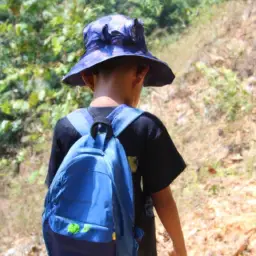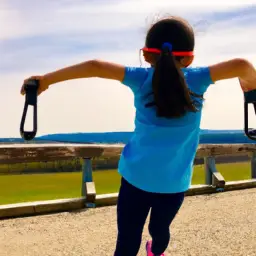Are you concerned about your child’s ability to persevere through challenges and setbacks? Do you want to equip them with the tools to bounce back from adversity? Look no further than grit and resilience programs for children.
These programs aim to cultivate traits such as determination, perseverance, and adaptability, all of which are essential for success in life.
In this article, we will provide a comparative analysis of different grit and resilience programs for children. We will explore the various approaches to teaching these skills, and examine the outcomes and effectiveness of each program. Additionally, we will discuss potential limitations and challenges, as well as best practices for implementing these programs.
By the end of this article, you will have a better understanding of the importance of grit and resilience in children, and the different ways in which you can help your child develop these crucial skills.
Key Takeaways
- Grit and resilience programs teach children essential skills for navigating life’s challenges.
- Different approaches to teaching grit and resilience include hands-on activities, structured lessons, and creative and interactive activities.
- Grit and resilience programs can improve academic performance, mental health, and well-being, and have a lasting impact on students.
- Best practices for implementing grit and resilience programs include considering teaching styles and age appropriateness, parental involvement, and cultural considerations.
Understanding the Importance of Grit and Resilience in Children
You might not realize it, but teaching your child about grit and resilience can have a significant impact on their ability to overcome challenges and achieve their goals.
Developing resilience and cultivating perseverance are essential skills that can help children navigate through life’s ups and downs.
Resilience is the ability to bounce back from setbacks, while grit is the determination to persevere through difficult situations.
Children who possess these qualities are better equipped to handle stress, setbacks, and failures. They’re more likely to take risks, learn from their mistakes, and persist in the face of adversity.
By teaching your child about grit and resilience, you’re helping them build a strong foundation for success in all areas of their life.
So, start early and encourage your child to develop these essential skills.
Different Approaches to Teaching Grit and Resilience
When it comes to teaching kids how to persevere through challenges, there’s no one-size-fits-all approach – different methods work for different children. One important factor to consider is teaching styles. Some children may respond better to a hands-on approach, while others may thrive in a more structured classroom setting.
It’s important for educators to identify the teaching style that works best for each child in order to effectively teach them grit and resilience. Additionally, age appropriateness is another important factor to consider when teaching grit and resilience. Younger children may benefit from more interactive and creative activities, while older children may respond better to more formal lessons and discussions.
Educators must take into account the developmental stage of each child in order to tailor their teaching methods appropriately. By considering teaching styles and age appropriateness, educators can design effective programs that will help children develop essential skills for navigating life’s challenges.
4 Tips for Teaching Grit and Resilience:
- Incorporate hands-on activities for children who learn best through experience.
- Use structured lessons for children who respond well to a classroom setting.
- Utilize creative and interactive activities for younger children.
- Tailor teaching methods based on the developmental stage of each child.
Outcomes and Effectiveness of Grit and Resilience Programs
When it comes to the outcomes and effectiveness of grit and resilience programs, you can expect to see improvements in academic performance, mental health, and well-being, and even long-term impact.
With these programs, students can learn how to work through challenges and setbacks, leading to greater success in their studies. They can also develop coping mechanisms that help them manage stress and anxiety, leading to better overall mental health and well-being.
Finally, these programs can have a lasting impact on students, helping them navigate challenges throughout their lives.
Academic Performance
As you participate in grit and resilience programs, you may notice that your academic performance improves. Studies have shown that these programs can increase study efficiency and help you better manage your time. By learning how to set goals, prioritize tasks, and maintain focus, you can become a more effective student.
In addition, parental involvement can play a significant role in your academic success. Grit and resilience programs often encourage parents to support their children’s education by setting expectations, providing resources, and offering encouragement.
When parents are involved in their children’s academic lives, students are more likely to feel motivated and supported, which can lead to improved performance in the classroom. By participating in grit and resilience programs and engaging with your parents, you can set yourself up for success both academically and in life.
Mental Health and Well-Being
Improving your mental health and well-being can be a positive outcome of participating in grit and resilience training. These programs aim to promote self-care and teach coping skills for children, which can ultimately lead to better mental health. By developing resilience and grit, children can learn to better manage stress and overcome challenges, leading to a more positive outlook on life.
One way to measure the effectiveness of these programs in promoting mental health is by looking at the decrease in symptoms of anxiety and depression. A study conducted by the University of Pennsylvania found that a resilience program for high school students resulted in a significant decrease in symptoms of anxiety and depression, as well as an increase in overall well-being. Another study found that a grit program for middle school students led to improved self-esteem and self-efficacy, as well as a decrease in symptoms of depression. Overall, these findings suggest that participating in grit and resilience programs can have a positive impact on mental health and well-being for children.
| Skills Taught in Grit and Resilience Programs | Benefits for Mental Health |
|---|---|
| Self-reflection and self-awareness | Increased self-esteem |
| Positive self-talk and mindset | Improved coping skills |
| Goal-setting and perseverance | Decreased symptoms of anxiety and depression |
| Stress management and relaxation techniques | Increased overall well-being |
Long-Term Impact
Imagine how much stronger and more capable you could be in the face of adversity if you’d participated in a resilience and grit training program earlier in life.
Long-term sustainability is a crucial factor to consider when evaluating the effectiveness of such programs. It’s important to ensure that the skills and knowledge acquired during the program are maintained and utilized throughout the child’s life. This can be achieved through continuous reinforcement, such as follow-up sessions or ongoing support from mentors or coaches.
Parental involvement is also a key factor in ensuring the long-term impact of resilience and grit programs. Parents play a crucial role in supporting and reinforcing the skills and knowledge learned during the program. They can do this through providing a supportive environment, encouraging their child to continue practicing the skills learned, and modeling resilience and grit in their own lives.
By working together with parents, resilience and grit programs can have a lasting impact on a child’s well-being and ability to navigate the challenges of life.
Potential Limitations and Challenges
You may encounter some challenges when implementing these programs, such as resistance from children or difficulty measuring their effectiveness. It’s important to consider parental involvement in the program as well as cultural considerations.
Parental involvement can be a challenge if parents aren’t supportive of the program or don’t have time to participate. Cultural considerations are also important to take into account as certain cultures may have different values and beliefs about grit and resilience that may not align with the program’s teachings.
Another potential limitation is the age appropriateness of the program. Younger children may not fully understand the concepts of grit and resilience, while older children may feel that the program is too simplistic or not challenging enough. Additionally, the program may not be effective for children who have experienced trauma or have significant mental health concerns.
It’s important to consider these limitations and challenges when designing and implementing grit and resilience programs for children to ensure that they’re effective and beneficial for all children.
Best Practices for Implementing Grit and Resilience Programs
By following these best practices, you’ll be able to create a safe and supportive environment where young minds can flourish and overcome any challenges they may face.
Firstly, it’s important to choose implementation strategies that are appropriate for the age group you’re working with. For younger children, activities should be more play-based and interactive, while older children may benefit from more structured exercises and discussions.
Secondly, it’s crucial to ensure that the program is age-appropriate and tailored to the specific needs of the children in the group. This may involve adapting the program to address any cultural or socioeconomic factors that could impact the children’s ability to develop grit and resilience. Additionally, it’s important to consider any individual differences in learning styles or experiences that may affect how each child engages with the program.
Lastly, it’s important to create a positive and inclusive atmosphere where all children feel valued and supported. This includes fostering a sense of community within the group and encouraging children to support and uplift each other.
By following these best practices, you can help children develop the skills they need to overcome obstacles and thrive in all areas of their lives.
Frequently Asked Questions
What is the average age range for children who participate in grit and resilience programs?
So, you’re wondering about the age range of kids who participate in grit and resilience programs and how long these programs usually last.
Well, the age range can vary depending on the specific program, but typically, they are designed for children between the ages of 6 and 18.
As for program duration, again, it can vary, but most programs tend to last at least a few months, with some lasting up to a year or more.
The goal of these programs is to help children develop the skills they need to cope with adversity and challenges, so they can lead happy and fulfilling lives.
Are there any cultural or demographic factors that may affect the effectiveness of these programs?
When it comes to grit and resilience programs for children, it’s important to consider cultural sensitivity and a targeted approach. Different cultural and demographic factors can affect the effectiveness of these programs, such as language barriers or different parenting styles.
It’s crucial to ensure that these programs are tailored to the specific needs and backgrounds of the children participating, as well as taking into account any cultural differences. By doing so, it can help ensure that the program is effective and that all children can benefit from it, regardless of their cultural or demographic background.
Is there any evidence to suggest that grit and resilience programs can have negative effects on children’s mental health?
Negative impacts on children’s mental health from grit and resilience programs are not unheard of, but they aren’t necessarily a direct result of the program design.
It’s important to note that every child is unique and may react differently to the program.
Some common negative impacts noted in studies have been increased stress levels, anxiety, and pressure to perform. However, these effects can often be mitigated by a well-designed program that takes into account the child’s developmental stage, individual needs, and cultural background.
Therefore, it’s crucial to carefully assess the program’s design and implementation to ensure that it doesn’t have any unintended negative consequences on the children’s mental health.
How do these programs compare to traditional academic interventions in terms of long-term outcomes?
When it comes to long-term outcomes, there are significant differences between traditional academic interventions and grit and resilience programs for children. Academic interventions focus on improving academic performance, while grit and resilience programs aim to enhance non-academic outcomes such as emotional regulation, problem-solving, and self-efficacy.
These non-academic outcomes have been found to have a positive impact on future career success. In comparison, traditional academic interventions have not been linked to long-term career success. Therefore, while academic interventions are important, incorporating grit and resilience programs into children’s education can have a more significant impact on their overall success in life.
Are there any ethical considerations that should be taken into account when implementing grit and resilience programs in schools?
When it comes to implementing grit and resilience programs in schools, there are some ethical considerations that should be taken into account.
For instance, it’s important to make sure that these programs aren’t being used as a way to blame children for their lack of success, or as a way to excuse systemic issues within the educational system.
Additionally, it’s crucial to ensure that students aren’t being pushed too hard or asked to take on an unreasonable amount of responsibility.
Implementation challenges may also include making sure that teachers are properly trained to implement these programs and that they’re equipped with the resources necessary to do so effectively.
As with any educational intervention, it’s important to approach grit and resilience programs with care and consideration for the well-being of the students involved.
Conclusion
Congratulations! You’ve reached the end of this article on grit and resilience programs for children. You’ve learned about the importance of teaching children these skills and different approaches that can be taken to do so.
Through this comparative analysis, you’ve gained insight into the outcomes and effectiveness of grit and resilience programs, as well as potential limitations and challenges that may arise.
However, with the implementation of best practices, such as providing a supportive environment and incorporating fun and engaging activities, these challenges can be overcome.
Remember, teaching grit and resilience to children is a vital part of their personal and academic growth. By providing them with the tools to bounce back from setbacks and persevere through challenges, you’re setting them up for a successful and fulfilling future.
Keep up the great work!









































































































